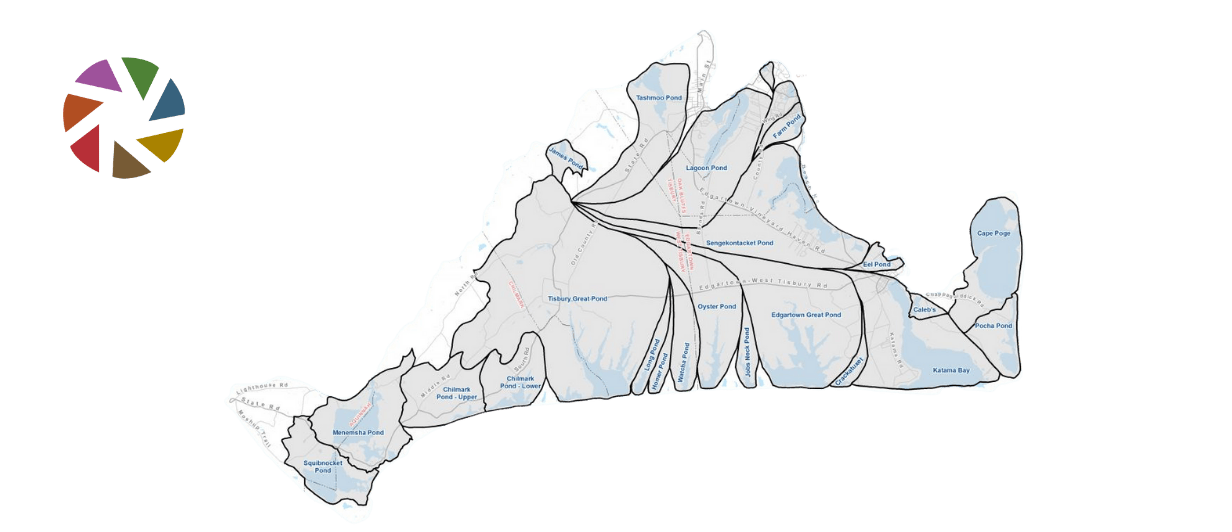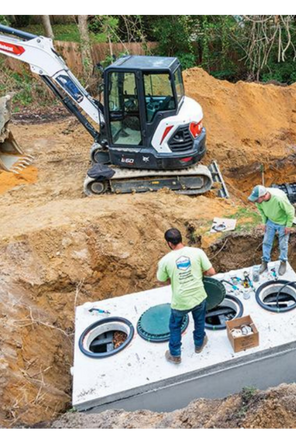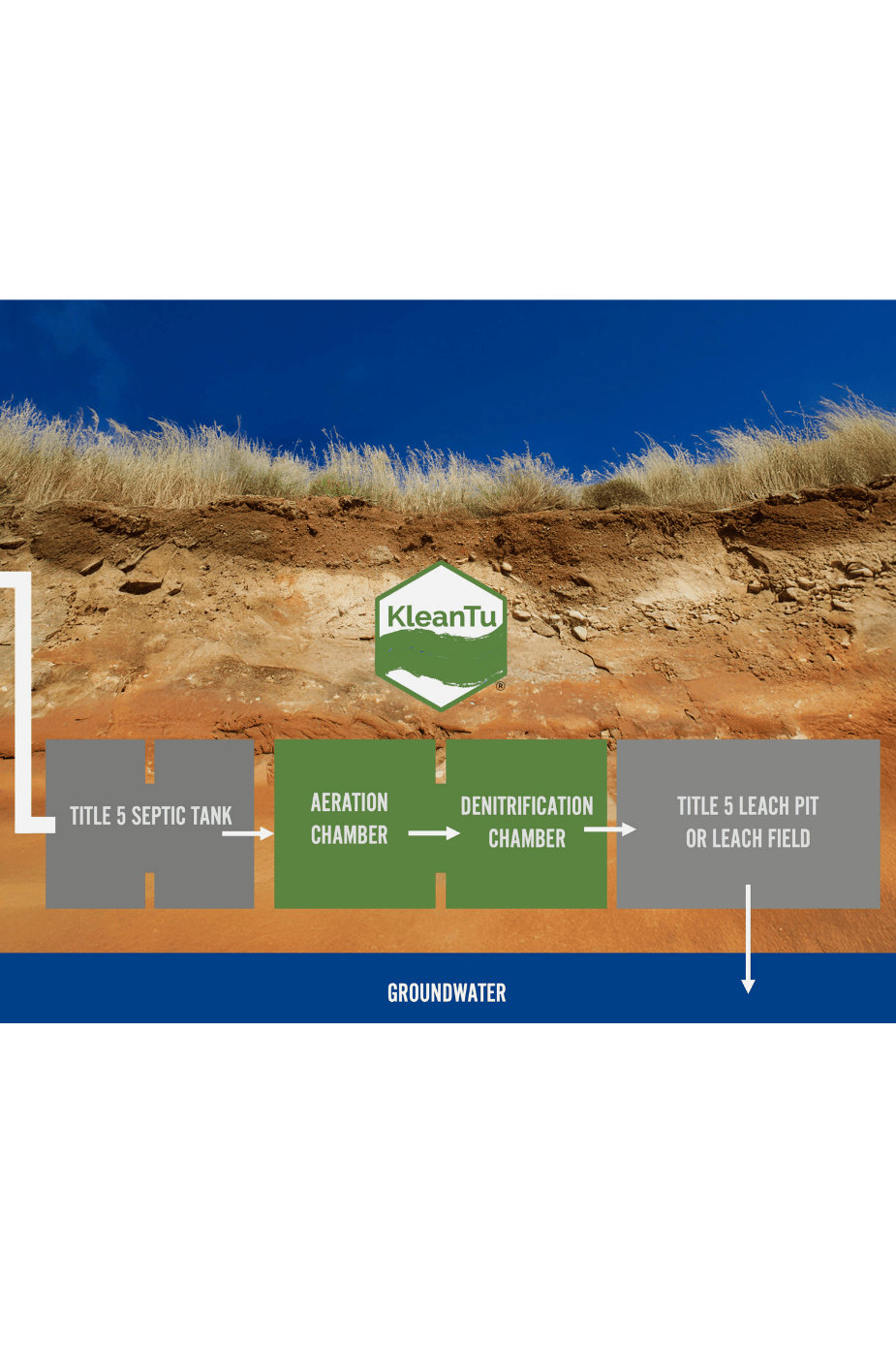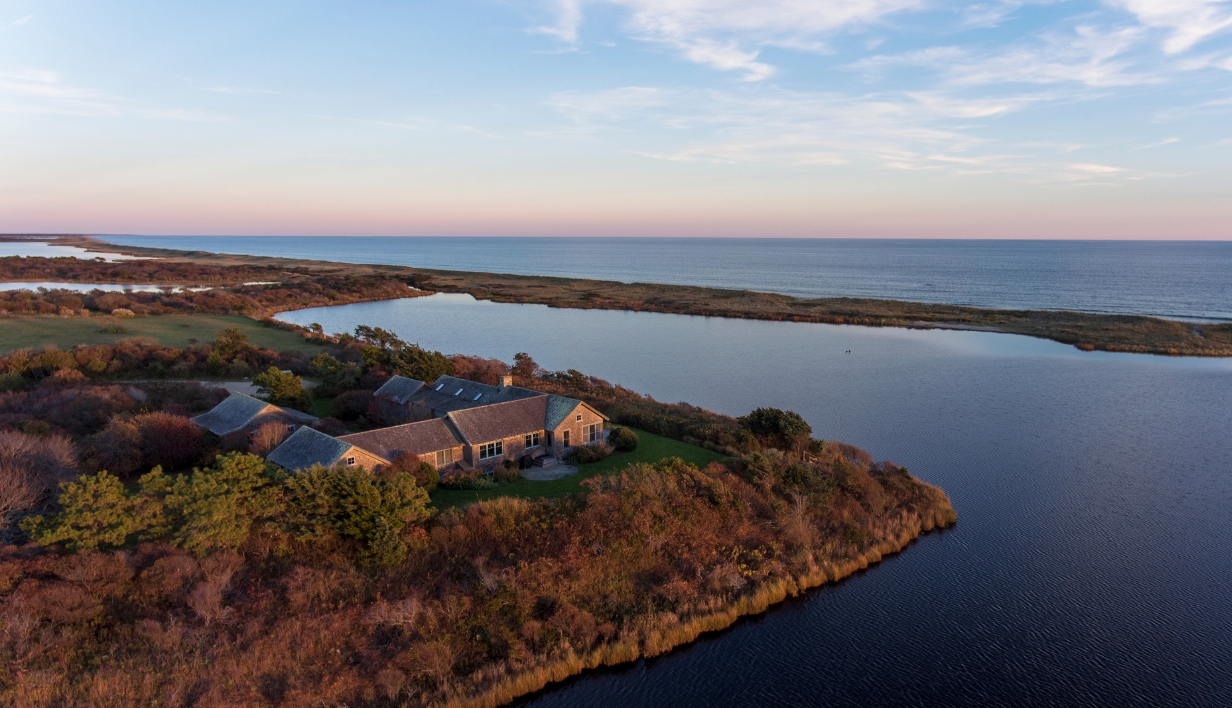
We’re diving into our Impact Framework lens by lens to show you what sustainability looks like in action. This month’s lens: water—the lifeblood of island life. Our goal: to protect our ocean, single-source aquifer, inland waterways and ponds. The tool we’re spotlighting here is Denitrifying septic systems (Hear us out. They’re not glamorous, but they’re game-changing!)
The above map shows the MV’s watersheds—land areas that drain into our 21 coastal ponds. The nexus appears to be at West Tisbury Conroy’s. If you poured a cup of coffee out there, it could trickle into six different watersheds. That’s how interconnected—and vulnerable—our water systems are.
For decades, nitrogen loading from septic systems and landscape fertilizers has been quietly overwhelming our ponds.These bodies of water were always able to absorb a little nitrogen. But now, the scale of input far outpaces their natural capacity to process it.
The result? Algae blooms. Often they look like shocking green mats or foamy scum on the surface. They also deplete oxygen, kill plant life and fish, and create toxic cyanobacteria—posing serious risks to people and pets.
And while the threat has grown, regulation hasn’t kept pace. On Cape Cod, 40% of ponds were found to have unacceptable water quality in 2022. Unless something changes, Martha’s Vineyard is headed down the same path.


At South Mountain, this issue has long been on our radar. For years, we turned to composting toilet systems (like the Clivus Multrum) to keep waste out of septic systems entirely. We’ve used them at our headquarters and on several residential projects. They conserve water and turnwaste into a useful byproduct—but they also come with tradeoffs. Bulky equipment. Basement access. And let’s be honest: a small but real risk of dropping your phone into the abyss. (Ask our Communications Coordinator, Abbie Zell about that one.) In short: they work, but they’re not for everyone.
Enter the NitROE system by KleanTu.
NitROE uses standard plumbing fixtures and conventional septic parts, with a few powerful modifications. It removes up to 93% of nitrogen from wastewater—60–70% more than a traditional system.
KleanTu’s NitROE system was developed by two local guys, John Smith and Richard Donahue. John is a wastewater engineer who has designed wastewater systems all over the globe and is the visionary of this system. Richard Donahue was his caretaker at the time, and having worked in the trades, he helped John scale down his vision to be adapted for residential use, utilizing readily available materials.


NitROE builds on the familiar Title 5 system(tank and leach field), adding a third tank between the septic tank and the leaching area. That’s where the magic happens:
By the time it reaches the leach field, the wastewater carries just 7% of the nitrogen it started with!
